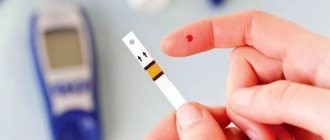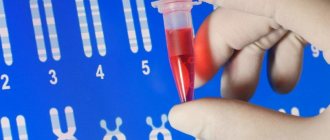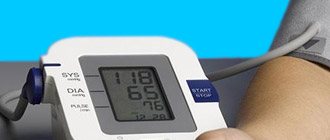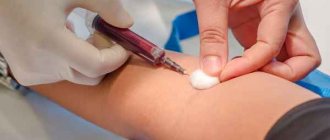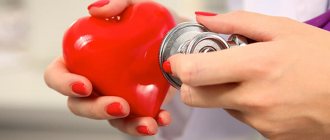How can diet lower triglyceride levels?
Triglycerides are a type of fat found in the blood.
High triglyceride levels can be a risk factor for various health conditions. Therefore, your doctor may advise changing your diet to try to reduce their levels. Certain health conditions, genetics, medications, and lifestyle choices are risk factors for high blood triglyceride levels. For example, a diet high in refined carbohydrates, added sugars, saturated fats, and excessive alcohol can increase triglyceride levels in the body.
By changing your diet, you can regulate the level of triglycerides in your blood.
This article explains what triglycerides are and what levels are considered normal. It discusses which foods can lower triglyceride levels and which foods to avoid. It also provides a sample meal plan and describes other options your doctor may recommend.
Lower triglycerides and a new diet!
In order to reduce high triglycerides in the blood, it is extremely important to bring order to your diet. What does this look like in practice? First of all, you will definitely have to develop your own culinary skills, since you will have to give up some “store-bought” food products - temporarily, while others - forever! And also add new dishes that are very healthy for the body, but “NOT profitable” for mass sales. So, what can and cannot be eaten if you have high triglycerides? Which foods should you add to your diet and which should you exclude? Let's start with the last one.
Eliminate refined sugar!
In order to lower triglycerides in the blood, first of all, give up “sweets”. Especially “store-bought” ones, which contain an impressive amount of ingredients aimed not at human health, but at increasing shelf life. And that means the sales period. Despite the fact that sugar, as one of the main components for making sweets, tastes very pleasant, it is one of the representatives of “toxic food”.
Especially refined sugar, i.e. industrial/processed, having as many as 5 carbohydrate atoms in its structure. “Thanks to” this circumstance, along with this “wrong” sugar (absolutely devoid of minerals, vitamins and other useful substances), our body receives many “empty” calories, which are converted into excess triglycerides. Quickly accumulates and is difficult to remove from the body.
Thus, if you have high triglyceride levels (in order to reduce it - quickly and effectively) say to “sweets”: a firm NO! And the next time you go to the store, pay special attention to all products that contain ingredients (on the labels) that end in “OSA”. This includes sucrose (the above/mentioned “disguised” refined sugar), as well as fructose (natural/natural/“proper” sugar), lactose, maltose and dextrose.
After reducing the level of triglycerides to adequate values, your daily intake of “right” sugars (it is better to avoid “wrong” sugars forever) should not exceed 5-10% of the total calories. That is, approximately, no more than 100 kcal in “sweets” for women and 150 kcal for men. No more than 100-150 gr. (per day) mangoes, grapes, blackberries, bananas, pineapples, overripe watermelons and pears. Recommended gifts of nature (for people with “problematic” triglycerides) are tomatoes, citrus fruits, strawberries, avocados, melon and apricots.
Reducing the amount of carbohydrates!
To lower triglycerides (towards normal), you need to reduce the consumption of foods high in carbohydrates (especially refined ones). Their most striking representatives are baked goods baked from premium white flour (i.e., the beloved white bread). Although, sometimes, even white rice or semolina porridge can also increase the level of TG in the blood (or negatively affect their normalized amount). Be sure to consult your doctors!
WE RECOMMEND YOU TO READ:
foods that increase fat (lipid) levels
What is the right thing to do? First of all, replace white bread with gray bread (made from rye flour / coarsely ground) if you do not have problems with high acidity. If you have them, then eat pasta! Next, by reducing (or eliminating) “carbohydrate” foods, increase or completely replace them with “protein” foods! Having a lower glycemic index, which means they are more slowly digested, absorbed and “metabolized” by our body! This results in minimal and slower increases in lipid (including triglycerides) and blood sugar levels. LEAN ON THE SQUIRRELS!
YOU MAY NEED:
table - what you can and cannot eat with high lipid levels
We take strict control of fats!
The next step to quickly and effectively lower triglyceride levels is to control the “names” and amount of fats you eat daily. It would seem that “fat is fat in Africa too.” But no! Again, in pursuit of profits, some companies use trans fats to make their products (margarine, spreads, hydrogenated vegetable oils, etc.). Thanks to which, goods can be stored for a long time and not lose their shape and taste even with temperature changes (which is very important during long-distance transportation of products to points of sale).
In addition, margarine or sandwich spreads are much cheaper than natural butter. And the taste is almost the same. Which suited both producers and consumers for a couple of decades. Until scientists found out that these ingredients (i.e., hydrogenated fats and oils) - both in their pure form (on a sandwich), as well as in everyone’s favorite fast food or donuts - literally kill the body. Not only by record-breaking levels of “bad” cholesterol and triglycerides in the blood, but also by increasing the risks of a number of cancers.
That is why, completely give up all foods containing trans fats, without returning to them even when your (fat) lipid levels are completely normalized. However, never categorize absolutely all fats with the same brush. Because some of them are very important for our health. They are called: MONO- or POLY-UNsaturated fats. The first one is olive oil! Popular examples of others are sunflower oil, flaxseed oil, fish oil and walnut oil.
Separately, it is worth highlighting fish oil, rich in OMEGA-3 fatty acids. At their core, these are “good” fats that are capable of “knocking out” “bad” fats from our bodies. Thus, if you eat fatty fish (salmon, sardines, mackerel or alkabor tuna) twice a week, you will very quickly notice how quickly your triglyceride levels have decreased. Very good results are noticeable after about 10-12 weeks. If you are allergic to fish, then an alternative option on the menu is salads made from mixed greens (particularly leafy vegetables) with the addition of flaxseed oil and chopped walnuts. The latter also contain PUFAs, i.e. polyunsaturated OMEGA 3 fatty acids.
Fatty fish, walnuts, flax seeds and avocados not only reduce triglycerides, but also reduce the risk of breast cancer (in women).
Add more fiber to your diet
BE SURE to include foods containing (in large quantities) fiber in your menu. Those. coarse water-soluble and insoluble dietary fiber. As for the latter, due to their ability to perfectly absorb liquids, they turn into a kind of gel/shaped mass, which not only cleanses the intestines of toxins, but also “sculpts” fats onto itself. Thus, reducing the amount of “extra” lipids (including triglycerides) in our body.
In addition, fiber normalizes intestinal function (minimizing putrefactive processes, thereby saving us from cancer), and also acts as a “regulator” of blood sugar and cholesterol levels. As for the last advantage, water-soluble dietary fiber is responsible for this. The best option: use both. Daily fiber intake for men and women: 35-50 g. Just drink more water!
The champions in fiber content are wheat bran (43 g/100 g of product). Next come: dried apricots (18 g/100 g), dried apples (14.9 g/100 g), raisins (9.6 g/100 g), gray bread (8 g/100 g), nuts (4.0 g/100 g). Other recommended foods (to reduce excess triglycerides) are beans, cabbage, carrots, beets, tomatoes, peas, apricots, boiled pasta, greens (dill, parsley, lettuce). And also buckwheat, oatmeal and pearl barley porridge - DAILY! Another significant benefit of fiber is that it makes you feel full. And this is important when you have to heroically give up some bread/bakery products.
What about meat?!
To normalize high triglyceride levels, completely avoid meat by-products (i.e., internal organs of animals and birds), except for beef liver (up to 80 grams per week). And temporarily replace “red” meat with “white” / poultry / EXCEPT duck and goose (only without the skin). If the situation improves (in consultation with your doctors), add ONLY lean beef, veal or lamb to your diet. Naturally, you will have to forget about pork, lard, bacon, salts, smoked sausages and other (supposedly) “delights” of life for a very long time! And this is for the better!
What are triglycerides?
Triglycerides are a type of fat or lipid in the body. They are the most common form of body fat because the body stores most fat as triglycerides.
Triglycerides circulate in the blood and their levels can be measured using a blood test.
A triglyceride is made up of three fatty acid molecules combined with a glycerol molecule, which is a form of glucose. We consume triglycerides as fats in our diet. The human body can also convert glucose from foods into triglycerides.
Triglycerides serve as one of the main sources of energy in the body. If the body does not need energy immediately, it stores triglycerides as fat.
Spherical particles known as lipoproteins package triglycerides and pass through the bloodstream, delivering them throughout the body.
According to the American Heart Association (AHA), high levels of triglycerides in the blood are a risk factor for cardiovascular disease. Research also shows that there is a link between high triglyceride levels and the following conditions:
- obesity
- insulin resistance
- type 2 diabetes
- pancreatitis
Symptoms of high cholesterol
It is possible to determine the exact level of cholesterol in the body only after an analysis, but there are symptoms that may indicate the presence of disturbances in the functioning of the body. This will not allow you to make a diagnosis, but it should be a reason to visit a lipidologist or cardiologist. Make an appointment for a preventive appointment if:
- physical activity or excessive anxiety provokes the appearance of aching pain in the chest;
- even minor physical activity causes a feeling of lack of oxygen;
- you begin to get tired faster, and fatigue is accompanied by a feeling of heaviness in the chest area;
- you often have a headache for no reason, there is noise in your ears, you feel oxygen starvation to the point of fainting.
If you notice the symptoms described, make an appointment with your doctor. It will be enough to visit a therapist so that he can conduct a preventive examination and, if necessary, refer you to other specialized specialists.
The diagnosis of atherosclerosis is difficult to make without biochemical and instrumental examination, so be prepared for the fact that you will have to undergo a series of tests. The examination usually begins with a blood test and an ECG.
. Then, depending on the results obtained, a treatment program is prescribed, if necessary. The patient’s blood is usually taken from a vein, but if a quick result is needed, it can be obtained using the express method by drawing blood from a finger. To obtain more accurate results, it is recommended to donate blood on an empty stomach.
Healthy triglyceride levels
According to the National Heart, Lung, and Blood Institute, normal fasting blood triglyceride levels are:
- less than 75 milligrams per deciliter (mg/dL) for children under 10 years of age
- less than 90 mg/dL for children aged 10 years and older and adults
Doctors call elevated levels of triglycerides in the blood hypertriglyceridemia. You can be diagnosed with hypertriglyceridemia if your fasting blood triglyceride level is consistently 150 mg/dL or higher.
However, different clinical guidelines may classify high triglycerides at different levels.
Research shows that blood triglyceride levels are higher in men and increase with age in both men and women.
Some also have a genetic predisposition to high triglyceride levels, and doctors call this familial hypertriglyceridemia.
Blood triglyceride test
The biomaterial for this study is venous blood. Analysis is prescribed for the following purposes:
- To assess the possibility of the appearance of symptoms of atherosclerosis, which is characterized by the uncontrolled growth of cholesterol plaques and there is a risk of complete blockage of the vessel by them.
- To monitor the progress of treatment with drugs used to reduce the level of glycerol derivatives.
Situations when a doctor prescribes a test for triglycerides:
- Together with an analysis of cholesterol levels or to determine a general lipid profile. This study is recommended for adults who have crossed the 20-year threshold at least once every 4-5 years;
- For preventive purposes, if the patient is recommended to eat a diet with a reduced amount of fat, to control lipid levels and determine the risk of heart and vascular diseases;
- For diabetes mellitus, this analysis is not only recommended, it is mandatory, since the levels of sugar and triglycerides are constantly dependent on each other;
- If a child has been diagnosed with elevated cholesterol levels or heart disease, monitoring of triglycerides is necessary.
Examples of Triglyceride Lowering Products
The AHA recommends focusing on certain foods to help manage triglyceride levels. Foods that may help lower triglyceride levels include:
- Low fructose vegetables: These include leafy greens, squash, pumpkin, green beans and eggplant.
- Low fructose fruits: such as berries, kiwis and citrus fruits.
- Fiber-rich whole grains: brown rice, whole grain bread, quinoa, oats, barley and buckwheat.
- Fatty fish : salmon, herring and sardines.
- Low-fat dairy products: These include milk, yogurt and cheese.
Additionally, the AHA advises:
- limit added sugar to no more than 10% of total daily calories
- limit carbohydrate intake to 50–60% of daily calories
- keep the fat content in the diet to 25–35% of the total diet
- reduce or avoid alcohol intake
References
- Francois, M., Baigent, C., Catapano, A. et al. 2021 ESC/EAS Guidelines for the management of dyslipidaemias: lipid modification to reduce cardiovascular risk, 2021. - Vol. 41(1). — P. 111-188.
- Arthur, C., John, E. Physiology Review, 2015.
- Severin, E.S., Aleynikova, T.L., Osipov, E.V. and others - M.: Medical Information Agency LLC, 2008. - 364 p.
- Kumar, V., Abbas, A., Fausto, N. et al. Robbins and Cotran Pathologic Basis of Disease, 2014. - 1464 p.
Sample meal plan
Below is a sample meal plan that may help lower your triglyceride levels.
| Option 1 | Option 2 | Option 3 | |
| Breakfast | salmon, poached egg and watercress, whole grain rye bread | buckwheat pancake with blueberries and low-fat yogurt | porridge with low-fat or vegetable milk, sprinkled with pumpkin seeds and berries |
| Dinner | Avocado, spinach, tomato and hummus salad | lentil and vegetable soup with oatcakes | sardines on whole grain toast with a side of salad greens |
| Dinner | stir-fry chicken and vegetables with brown rice | butternut squash and tofu curry, served with cauliflower rice | vegetable and bean chili, served with stewed cabbage |
| Snack | banana, almonds | boiled egg and whole grain pita slices | celery sticks and nut butter |
Reduce your sugar intake
Sugar is a form of carbohydrate and is high in calories. Foods high in simple sugars, especially refined fructose, can raise triglyceride levels. Added sugar comes in many forms, including:
- white sugar
- Brown sugar
- honey
- cane juice or cane syrup
- corn sweetener or corn syrup
- fruit juice concentrate
- glucose
- fructose
- dextrose
- maltose
- lactose
- sucrose
- syrups such as maple, agave and molasses
Added sugar should be avoided to reduce triglyceride levels.
Instead of sugar, sprinkle spices such as cinnamon or ginger onto your cereal or oatmeal to add flavor. Choose fruit desserts instead of ice cream or sticky puddings. When purchasing ready-to-eat foods, remember that many of them, including some savory foods such as tomato ketchup, contain added sugar.
Every 4 grams of sugar is equivalent to 1 teaspoon. Cardiologists recommend a daily maximum sugar intake of 25 g (about 6 teaspoons) for women and 36 g (9 teaspoons) for men.
Other Triglyceride Lowering Options
In addition to dietary changes, your doctor may also recommend the following to lower triglyceride levels:
- Physical Activity: The AHA recommends at least 30 minutes of moderate-intensity physical activity at least 5 days per week for a total of at least 150 minutes per week.
- Achieving a moderate weight: According to the AHA, losing 5 to 10% weight results in a 20% reduction in triglyceride levels.
- Taking omega-3 fatty acids : Research suggests that omega-3s may prevent and treat hypertriglyceridemia.
- Taking niacin: Studies have shown that niacin, also known as niacin, may help lower triglyceride levels.
- Taking fibrates: Evidence also suggests that fibrates are effective in lowering triglyceride levels.
Features of hypertriglyceridemia in women
Women are more likely to have elevated cholesterol and triglyceride levels. The fact is that adipose tissue plays a hormonal role for the fair sex and is responsible for many female functions. In addition, triglycerides are involved in the construction of estrogens. But even here there are limits beyond which lipids cause problems.
Pathological causes of increased TG in women:
- violations of estrogen-based oral contraceptive regimens;
- hormonal disorders;
- infertility;
- polycystic ovary syndrome;
- premenopause, menopause.
During pregnancy, women experience physiological hypertriglyceridemia. Moreover, cholesterol levels also increase significantly. The reasons lie in the most complex hormonal changes in the pregnant woman’s body.
Conclusion
You can lower your triglyceride levels by changing your diet, maintaining a moderate weight, and exercising regularly.
You should also avoid refined carbohydrates, added sugars and saturated fats. Replacing them with low-sugar fruits and vegetables, whole grains and fatty fish can reduce triglyceride levels and the risk of obesity and cardiovascular disease.
It is important for the doctor to decide whether this approach is enough to make a difference or whether medications will be necessary. You should definitely contact your doctor to find out which approach is most appropriate.
Limit carbohydrates
You should limit your total carbohydrate intake to less than 60% of your recommended daily calorie intake. If you consume more carbohydrates than you need, your body will store them as fat. There are many ways to avoid carbs, such as eating lean burgers with lettuce instead of a sweet cream bun. Some carbohydrate foods, including some grains, may be beneficial in the diet. However, refined carbohydrates such as white bread provide few nutrients and add calories to the diet.
To get more healthy carbohydrates, choose whole grains, oatmeal and vegetables such as carrots. For dessert, choose fresh or frozen blueberries, blackberries or raspberries instead of sweet baked goods. These fruits can reduce sugar cravings and also provide healthy carbohydrates. Not only are unrefined carbohydrates a source of dietary fiber, but they also provide faster and longer-lasting satiety than refined carbohydrates because they release their energy more slowly.


